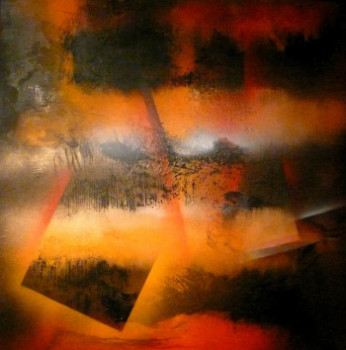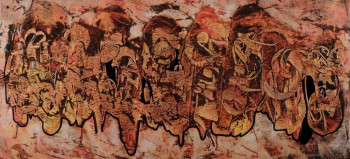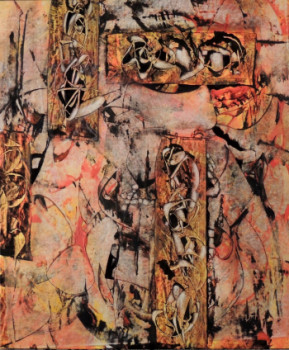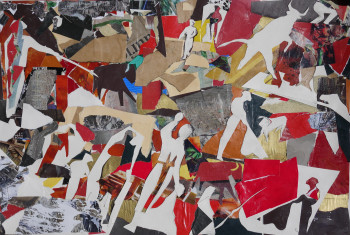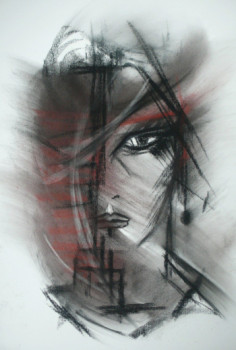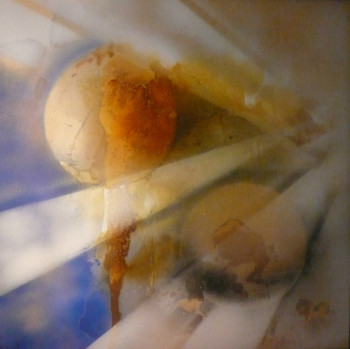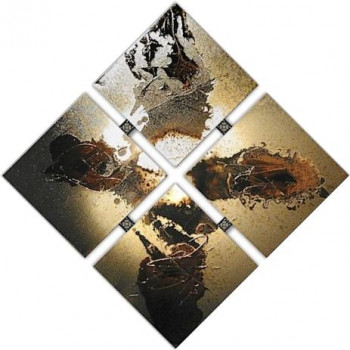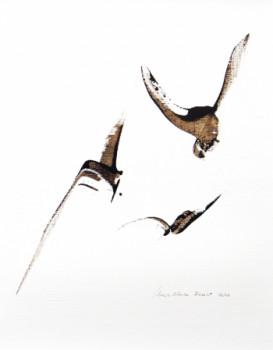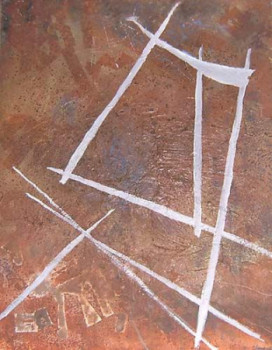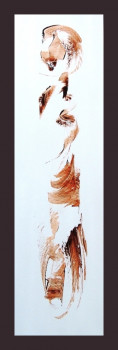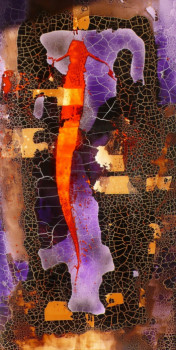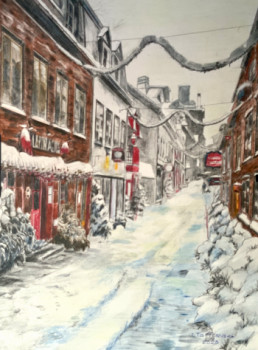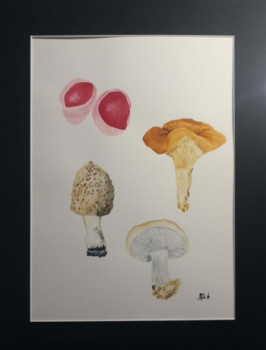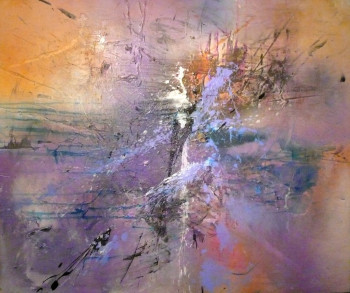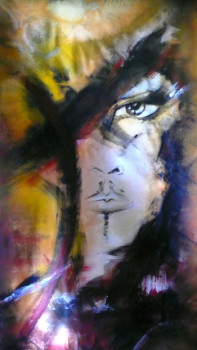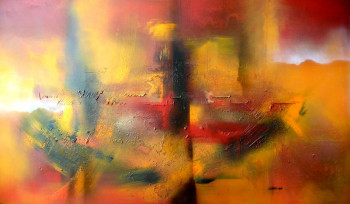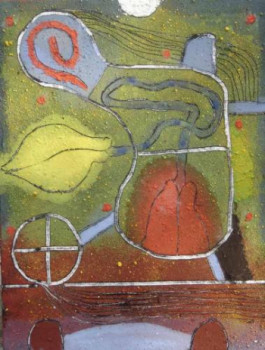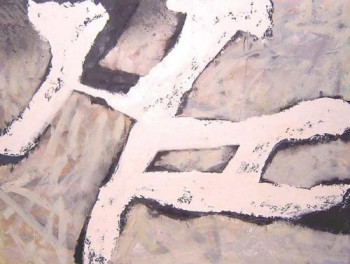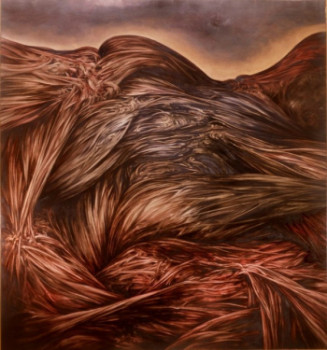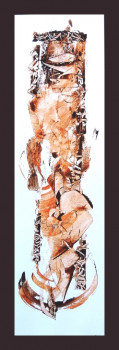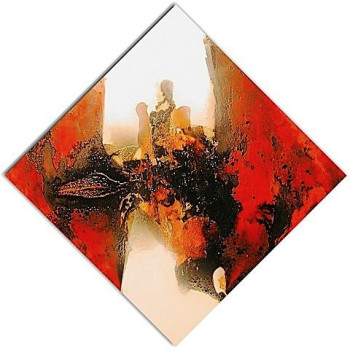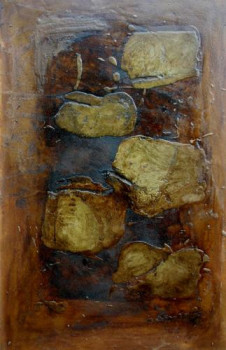
Presentation of Robert Motherwell
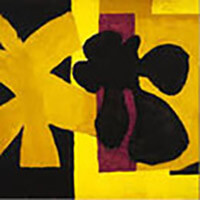
Between the 1930s and the end of the 1980s, the American artist Robert Motherwell was the one of the main representatives of the abstract expressionism movement(with Jackson Pollock and Mark Rothko), producing a vast body of abstract paintings, drawings, collages and prints. He was also noted for his critical studies of surrealism and Piet Mondrian, among other subjects.
The beginning of his career
Motherwell, who was born Born in 1915 to a wealthy family in Aberdeen, Washington, he studied in 1915. art at agrave; the Otis Art Institute. He then entered university from Stanford, where he obtained a degree in philosophy. During his graduate studies at After graduating from Harvard in 1938, he took a year-long trip to Europe that awakened his interest in life. his desire to become an artist (while he was in Europe writing his thesis, he lost it on the way back to America). He started his career as an artist throughout Paris, where he was inspired by French modernist artists, and had his first exhibition at Paris. the Raymond Duncan gallery in 1939.
Motherwell has arrived; in Europe as the brutal Spanish Civil War came to a head. its end. The painter was so moved by this political cause that in 1948 he launched his famous series "Elegy to the Spanish Republic", which would last a long time. The majority Canvases from this series of hundreds of paintings created between 1948 and 1991 present the same abstract motif: black oval figures caught between black vertical rectangular bars which rhythmically divide a white canvas. It is a symbol of life, death, valor and resistance.
Motherwell Expressionism
Robert Motherwell studied the history of art university from Columbia under the direction of the art historian Meyer Schapiro after coming to Paris. New York in 1940 his father's request. In 1941, he began to work. meet Roberto Matta and other European surrealists living in exile abroad. New York. Motherwell's technique was influenced by his exposure to surrealist ideals of expressing the subconscious through spontaneous movements, and he abandoned his university studies to paint in detail. full time.
These ideas had a long influence on the abstract expressionists of the New York school, to whom the painter was associated. presented by William Baziotes. Jackson Pollock, Barnett Newman, Mark Rothko and Clyfford Still are among the pioneers of this group. Abstract Expressionism was an introspective movement that emphasized painting as an act of performance and the artist as subject. In 1944, Peggy Guggenheim's Art of This Century gallery in New York. New York asks Motherwell to hold a personal exhibition. For the painter, as for Pollock and Baziotes before him, it was a decisive moment.
The works of Motherwell are located at the border between the two basic forms of abstract expressionism: color field painting and action painting. While the first attempts to highlight the texture of the painting and the movement of the artist, the second seeks to highlight the texture of the painting and the movement of the artist. reveal contrasts between large planes of color. Robert Motherwell’s art was emotive because of the vivid, expressive brushstrokes he created with spontaneous movements. This style was associated with a formal system that featured controlled brushstrokes, studied structure, vibrant color contrasts and strong but simple shapes.
Painting mixed media by Robert Motherwell
Motherwell was a widely read editor and teacher, in addition to being a painter, thinker, and writer. His attention refocused on artistic creation in the 1960s.
Collage was an important part of this painter's work. "Personage" (Self-portrait) (1943) was a key early experience. which used a wide range of discovered materials. Motherwell created Create this piece by gluing various types of cut-out paper onto the wall. and torn on cardboard, in crude patterns but organized in the form of a grid, then covering them with gouache and ink. Later collages, such as "In White with Four Corners" (1964), were more restrained, using only a few carefully chosen pieces of paper placed on a monochrome background. Unlike many of his contemporaries, this painter remained faithful to he used this method throughout his career. Motherwell started Adding elements from his studio life, such as letters, artist supply labels and cigarette packets, into his paintings in the 1960s, with poured color planes ;s around and above them.
The end of his career
Unlike other abstract expressionists, Motherwell adopted printing, particularly lithography, as an extension of collage. He started create prints at your fingertips limited edition in 1961 and produced more than 200 editions over the next 30 years. He shot took advantage of the plans that brightly colored lithography could offer in particular.
He expanded his use of color in painting throughout the 1970s, while continuing to expand on his work. Explore the previous patterns in black and white. His "Opens" series, which includes large planes of colored acrylic and disrupted by basic linear geometric patterns, is the best-known example of this evolution. The artist’s work became increasingly fluid and clear over the decade that preceded its release. His death in 1991. The series "The Hollow Men", made in the 1980s, focuses more on his expressive brushstrokes and spontaneous sketches. s and unconscious (all on a single canvas), thus returning to the essential values of his abstract expressionist approach.
Découvrez quelques oeuvres inspirées de Motherwell
